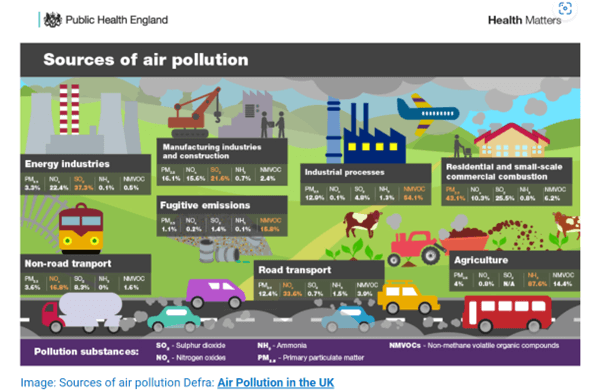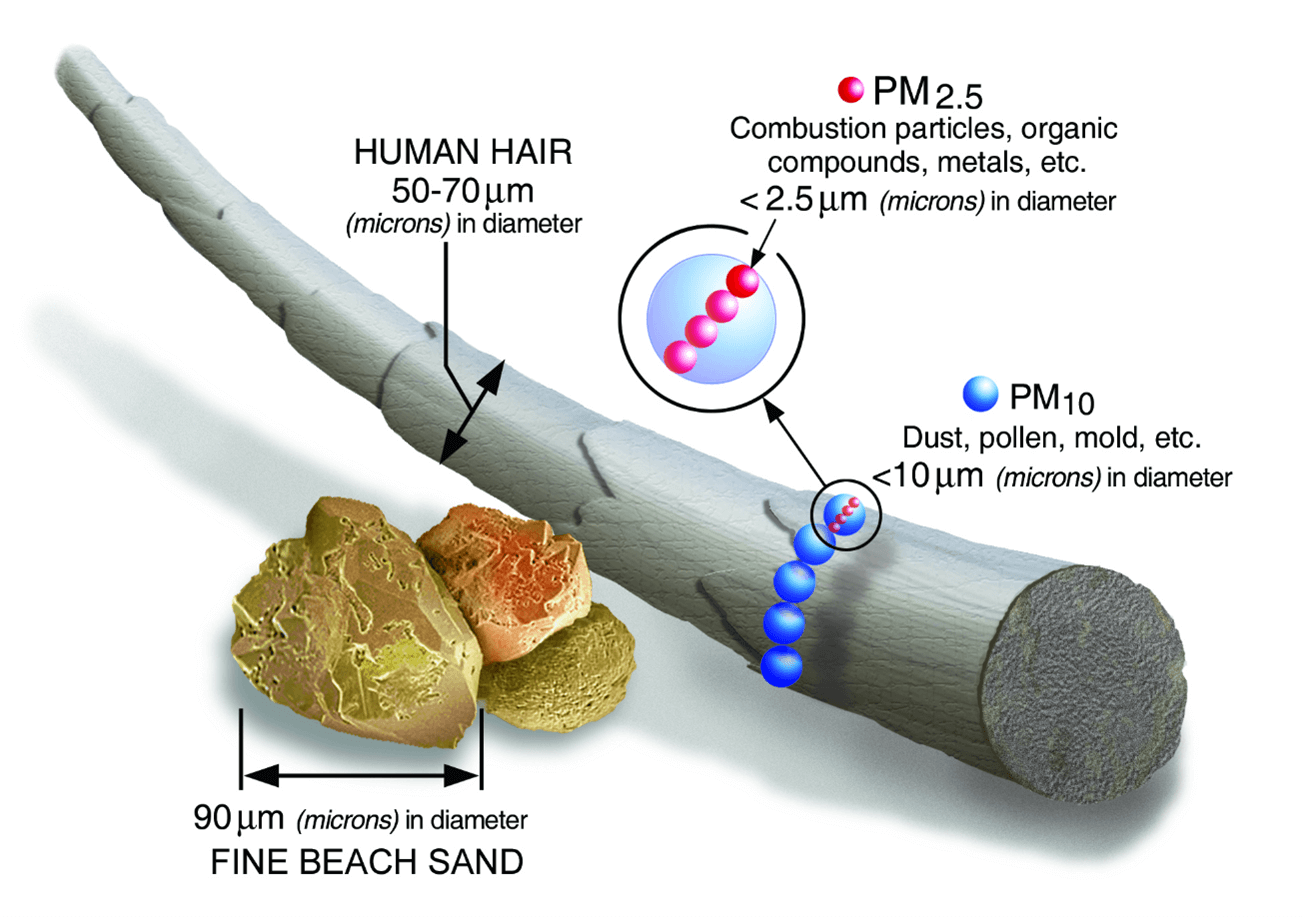
Ambient air pollution originates from sources that include:
- transport;
- industry;
- farming;
- energy generation;
- and domestic heating.
Concentrations of air pollutants can vary both temporally and spatially, but are typically higher close to the source. In urban areas especially, concentrations of particulate matter and NO2 can be quite high.
Indoor air pollution is also an important source of exposure and the average person spends around 80% of their time indoors. This is important to consider.
Pollutants and their sources include:
- CO, NO2 and particulates from appliances that burn 'carbon' fuels, such as coal, coke, gas, kerosene and wood. These include boilers, heaters, fires, stoves and ovens.
- OCs from cleaning and personal care products, building materials and household consumer products. These include paints, carpets, laminate furniture, cleaning products, air fresheners and polishing.
- Environmental tobacco smoke (ETS) and second-hand smoke (SHS).
- Radon which is a radioactive gas that has no colour or odour. It comes from the radioactive decay uranium and radium that occur naturally in all rocks and soils. The main danger of high radon exposure is the increased risk of lung cancer. It is generally not a problem in outside air, but can build up in buildings.
For more details, please visit: Health matters: air pollution (GOV.UK).
These pollutants are measured in Calderdale, which are the major components of urban air pollution:
Nitrogen Dioxide (NO2)
This is a brown gas that is made along with nitric oxide (NO) by the combustion processes, such as:
- the burning of petrol or diesel in an engine;
- or the use of natural gas in a boiler.
Together they are often referred to as oxides of nitrogen (NOx).
It is a respiratory irritant that can cause inflammation of the airways, which leads to:
- coughs;
- production of mucus;
- and shortness of breath.
Studies have shown that exposure to it can result in:
- reduced lung development;
- respiratory infections in early childhood;
- and effects on lung function in adulthood.
Particulate Matter (PM)
This is a complex mixture of solid and liquid particles that vary in shape, size and composition.
- Some are emitted directly into the environment (primary PM).
- Others are formed in the atmosphere through complex chemical reactions (secondary PM).
How it composed varies greatly and depends on factors, such as location, source and the weather.
The main outdoor sources of man-made PM in Calderdale are:
- Combustion of fuels for heat and power by vehicles, industry and domestic homes.
- Physical processes, such as:
- tyre and brake wear;
- construction and quarrying;
- and farming.
- Wood burning stoves are a major source of PM in some parts of Calderdale.
- Bonfires and barbeques.
The size of PM is measured in microns. The smaller the particle the deeper it can penetrate into the lungs and cause harmful effects.

(This image shows the size of 2.5µm and 10µm PMs compared to a human hair and a grain of sand.)
- Particles larger than 10 microns (µm) enter the nose or throat.
- Those smaller than 10 µm (known as PM10) can reach deep into the lungs and pose a greater health risk.
In 2021, the Government brought in national limits for PM.
The problem with PM2.5
These are very dangerous. They are so small, they can get in your lungs and then your bloodstream.
Exposure to them can cause illness, such as:
- asthma;
- COPD;
- coronary heart disease;
- stroke;
- and lung cancer.
There is also evidence that links them to:
- low birth weight;
- diabetes;
- and diseases such as Alzheimer's and Parkinson's.
How do you heat your home?
Burning solid fuels is a major cause of air pollution in and around your home.
It produces those small particulates that damage your health.
Get a personal air pollution action plan
Answer a few questions and get an plan just for you, visit: Clean air planner.